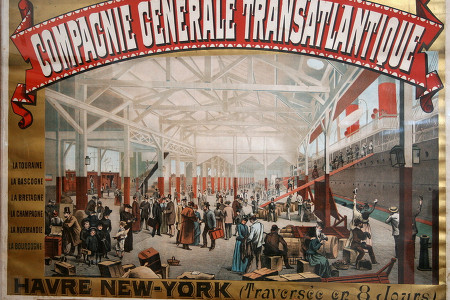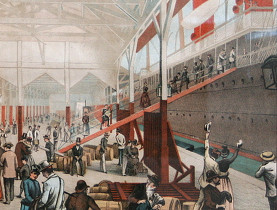Economic crisis and fools gold: Interview

Historian Giorgio Cheda, the pre-eminent expert on Ticino emigration, provides answers in this five-part interview to many questions about the mass movements abroad.
Cheda, whose own father lived in the United States for a few years, is the author of comprehensive volumes on the migrations to California and the Australian state of Victoria.
In the books, the stories of the 19th and early 20th century “emigranti” come alive through the countless letters they wrote to the loved ones they left behind.
Cheda also based much of his work on research he conducted in archives in the two countries during visits in the 1970s.
swissinfo: What were the economic conditions like in 19th century Ticino, which led to the first wave of migrations overseas?
Giorgio Cheda: There was a period of economic crisis in the mid-19th century, also in Ticino. In particular, there was the potato blight. There was a drop in production from the alpine pastures because there was a very serious disease that decimated the livestock. And, above all, there was an economic embargo.
Since Liberals in Ticino were helping the men of the Italian “Risorgimento” to achieve Italian unity, the Austrian authorities decreed an economic embargo between Ticino and Italy. This led to the immediate return of some 5,000 workers who were employed in Lombardy. It also meant it was impossible to buy grain (because Ticino depended on Lombardy for its bread), and it was impossible to sell timber, cheese, livestock and so on to Lombardy.
So it was a very hard time.
swissinfo: So where did these first “Ticinesi” migrants go, and what influenced their decision to go there?
G.C.: The first place to have a real impact was Australia. Why? Because the emigration agencies insisted especially on recruiting immigrants for Australia. The reasons are complex, but I can sum it up as follows: the Hamburg ship owners had invested a lot of money in order to carry emigrants to the goldfields. But the German authorities realised that this form of emigration was also a matter of speculation, and that the clauses in the contracts were not being respected. Since the agencies could no longer recruit further emigrants in Germany, they looked for new sources and so came to Switzerland.
However, strict laws were in force in the cantons regulating the activities of the emigration agencies. Ticino was the only one that had not passed a law of this kind. So for 18 months or a couple of years, the agencies had a free hand.
Through newspaper adverts, personal contacts and other means, they were able to recruit roughly 2,000 Ticinesi, especially from the valleys above Locarno. Almost half of these 2,000 came from the Valle Maggia, and many others from the Val Verzasca. And with these groups of emigrants they stipulated very tough contracts: the voyage was expensive, so almost all of these emigrants had to borrow money, take out a mortgage loan, to be able to buy their tickets for Australia.
Meanwhile, in those years only a few hundred went to California. So there was a difference from the very beginning: speculation on the part of the agencies, which deprived Ticino not only of 2,000 emigrants but also of some SFr2 million to pay for the voyage, while on the other hand those who went to California found fertile ground. Not only were they able to work in the goldfields and save a few dollars; they were also able to invest their savings straight away in land. Unlike in Australia, where land ownership was still the privilege of the British, in America land was available for anybody who wanted to cultivate it.
So these peasant farmers from the valleys of Ticino found fertile ground in California and were able to develop their working skills, like raising livestock, and making good quality butter and cheese, and selling it in centres such as San Francisco, and later Salinas and many other places – Sacramento, Los Angeles and so on.
They were able to perform very productive activities which enabled some of them to progress in time from being ranchers to being traders, or send their children to university and get involved in new professions which, here in Ticino would have been unthinkable for mere peasants. And so they were able to make their fortunes.
Cont.
Ticino population:
1850: approx. 118,000
1900: 139,000
1950: 175,000
2000: 307,000
Today: 330,000
(Official canton Ticino statistics)

In compliance with the JTI standards
More: SWI swissinfo.ch certified by the Journalism Trust Initiative













You can find an overview of ongoing debates with our journalists here . Please join us!
If you want to start a conversation about a topic raised in this article or want to report factual errors, email us at english@swissinfo.ch.